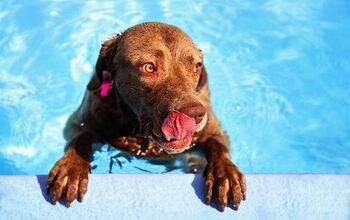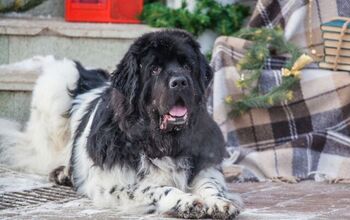Nova Scotia Duck Tolling Retriever


About Nova Scotia Duck Tolling Retriever
An active and fun loving dog, the Nova Scotia Duck Tolling Retriever is not only favored by hunters but by energetic families as well. This well-rounded breed is always ready for retrieving ducks, hiking, swimming, playing fetch and snuggling on the couch with his loved ones. His affectionate, loving and patient nature makes the Nova Scotia Duck Tolling Retriever a wonderful companion for adults and children alike.
Affectionately called Tollers or Duck Tollers by enthusiasts, this breed is known for its intelligence, trainability and adaptability. This breed’s steady temperament makes his safe and reliable with kids of all ages. To learn more about the Nova Scotia Duck Tolling Retriever, please continue reading.
An active and fun loving dog, the Nova Scotia Duck Tolling Retriever is not only favored by hunters but by energetic families as well.
The Nova Scotia Duck Tolling Retriever originated on the island of Nova Scotia, Canada in the 1800s. A prized retriever of the duck hunters, the Nova Scotia Duck Tolling Retriever was bred to entice ducks closer to the blinds so hunters would have a clean shot at them. The dog would then go get the duck and return it to the hunter. Today, this breed is a multi-purpose dog that makes a wonderful family pet.
The smallest of the retrieving breeds, the Toller is believed to be the result of mixing numerous dogs. These breeds may include the Irish Setter, Golden Retriever, Labrador Retriever, Cocker Spaniel, Collies, Flat Coated Retrievers, a Spitz type of dog and Chesapeake Bay Retrievers. In 1945, a breed standard was created in order to develop a more uniform Toller.
The Nova Scotia Duck Toller is an active dog. After all, he is a sporting breed. Tollers need a high-quality food formulated for energetic dogs. Dry food is best as it will help to cut down on oral health problems such as tooth decay and gum disease. Dry food also reduces bad breath.
Always wanting to please their owners, Tollers are relatively easy to train.
Always wanting to please their owners, Tollers are relatively easy to train. Positive training methods that include loads of praise and lots of treats work best for this breed. They are highly sensitive to harsh words and discipline so a calm and patient trainer is needed. Consistency in training is essential for the Toller to succeed in obedience.
Nova Scotia Duck Tolling Retrievers do well in many forms of canine competition. Of course, they excel in obedience trials but they also do well on agility courses. Agility is a great way to bond with the Toller as well as let him get the exercise he needs to stay healthy.
Tollers should tip the scales between 35 and 50 pounds and be somewhere between 17 and 21 inches tall at the withers. In this breed, females are smaller than males.
Duck Tollers are naturally curious and outgoing. They are friendly and affectionate toward visitors who are not threatening to their families and greet them like they were long lost friends. Nova Scotia Duck Tolling Retrievers are very adaptable. This breed enjoys traveling and isn’t spooked by new places or situations. His easy going personality and flexibility make the Toller a wonderful companion for active families.
Tollers bond quickly and fiercely with their families. This often leads to separation anxiety when they are left alone. Extensive exercise and plenty of toys will not help the anxiety issue. The Toller will do best in a home where someone is there for the vast majority of the day.
The Nova Scotia Duck Tolling Retriever is a healthy breed compared to many of the other retrievers. Tollers can have eye issues including progressive retinal atrophy, Collie eye anomaly and cataracts. Addison’s Disease and autoimmune thyroiditis have also been diagnosed in the breed.
Nova Scotia Duck Tolling Retrievers can live somewhere between 13 and 16 years!
Tollers are active dogs and need at least an hour’s worth of extensive playtime daily or at the very least, a few brisk walks or jogs through the neighborhood. A fenced yard is a necessity for Tollers as they need to romp and run. Families with children find this breed to be excellent playmates for their kids. The Toller will happily play ball or fetch for hours, keeping both the dog and the kids active.
Swimming is another activity loved by Nova Scotia Duck Tolling Retrievers. A home on the lake or one with a swimming pool would be like heaven for this breed. Water play and retrieving will keep the Toller in tiptop shape.
Duck Tollers are naturally curious and outgoing.
The American Kennel Club states: “Medium sized, powerful and compact, the Nova Scotia Duck Tolling Retriever is the smallest of the retrievers. He developed in the early 19th century to toll, lure, and retrieve waterfowl. The playful action of the Toller retrieving a stick or ball along the shoreline arouses the curiosity of the ducks offshore. This lures them within gunshot range, and then the dog is sent out to retrieve the dead or wounded birds. Their water-repellant double coat is any shade of red, often with white markings”. The AKC acknowledged the Nova Scotia Duck Tolling Retriever in 2003. It is in the Sporting Group.
Duck Tollers have a double coat that’s medium in length and water repellent. The coat should be straight with the exception of the back, which may be wavy. They usually have white tail tips, which is desirable as it aids in the hunter’s ability to see the dog’s location in the water. The coat is red and may sport other white markings on the head and chest.
Grooming is no problem for Toller owners. A good brushing once a week is enough to keep the coat in great shape. Bathing should be done on an “as needed” basis. This is especially true if the dog plays in a swimming pool or clean lake water.
Toller puppies are cute but they do need to be socialized and attend puppy obedience classes. This will give them a head start and foundation for all the things they will be trained to do later. This breed takes well to crate training so housebreaking should be a breeze.

Amy Tokic, Editor of PetGuide.com, is a passionate animal lover and proud pet parent of Oscar, a Shih Tzu/Chihuahua cross, and Zed, a Japanese Chin. Her love of animals began in kindergarten, when she brought her stuffed dog Snoopy into class with her every day. Now, she writes about her adventures in pet ownership and tirelessly researches products, news and health related issues she can share with other animal enthusiasts. In her free time, Amy loves perusing used book and record stores, obsessing over the latest pet products available and chasing squirrels with wild abandon (a habit attributed to spending too much time with her pooches).
More by Amy Tokic

























